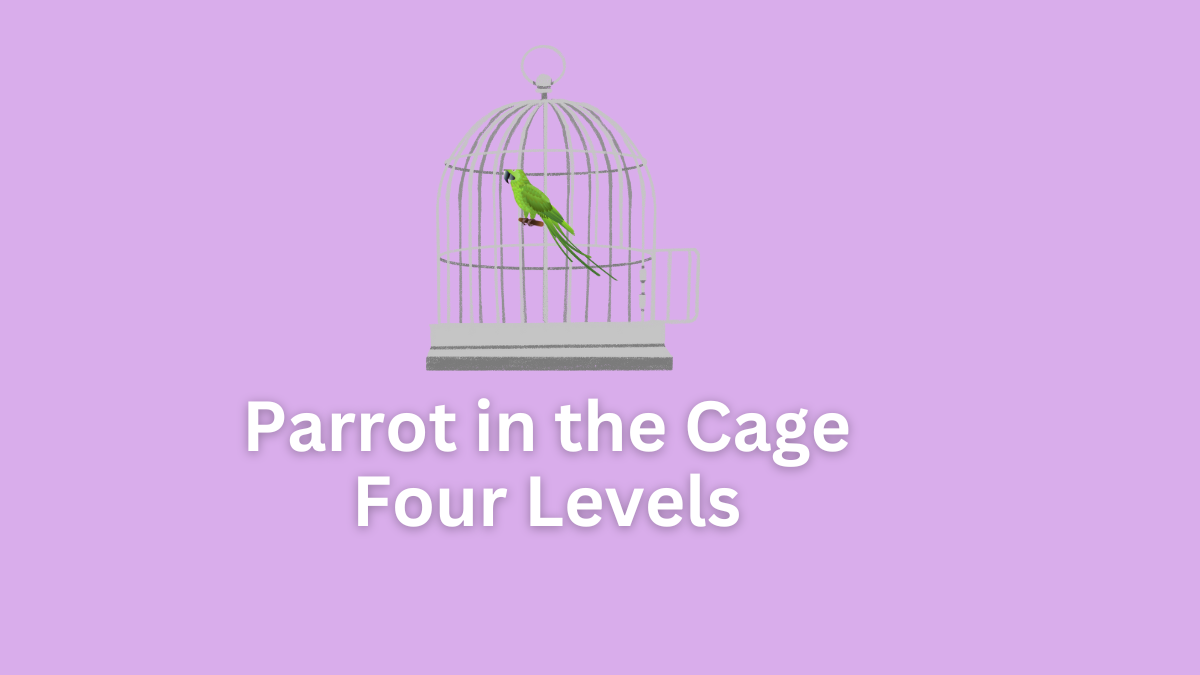The Parrot In The Cage Four Levels
The Parrot In The Cage is a poem written by Lekhnath Paudyal (1885-1966) and translated by Laxmi Prasad Devkota. Four levels of this poem are:
Literal Comprehension
This poem is a monologue in which the parrot laments his life inside the cage and shares his story of pain & separation from his dear ones. The parrot recalls how he used to fly & wander around the forests eating wild fruits.
But now fate has tricked him into the cage. He is deprived of cool water, shade & delicious fruits. All those things have vanished & they are like dreams.
His parents may be weeping to beat their breasts. Because he separated from them. He does not find any escape from the cage because he sees only enemies around the cage.
He tried to break the cage & fly away but his beak is blunt now. His feet & wings are cramped & he feels a sense of defeat.
He is given a stirred measure of third-class rice & devoid (lack) of water. Even his throat is dry he compelled to prate. If he refuses to prate, his master threatens.
He was forced to respond to the caller. He curses God for giving him the power of speech because it is the reason for his grief.
Finally, the parrot tells how the human race is hostile (unfriendly) & how there is the exploitation of one’s talent. He strongly prays to God not to let anyone have the life of a parrot until how long the men are on the Earth.
Interpretation
Indirectly, this poem is trying to show us the condition of the Nepali people in the Rana regime. The Nepalese had been ruled by the Rana for one hundred & four years.
During that period people were deprived of all kinds of freedom, justice & happiness. People were forced to live caged life. In the poem, the parrot represents the whole suppressed people of the Rana regime.
It shows human takes pleasure in giving pain to the parrot. Also, it shows, in the difficulties, as in Hindu culture people pray to God, similarly in this poem parrot also prays to God. And, the torture given by Rana to the Nepalese people is described & indirectly criticized in the poem.
Critical Thinking
Although this poem indirectly criticized the Rana regime, there are some points in the poem with which I do not agree. Can a parrot speak like a human to express his sorrows in real life? How can the bird organize the feasts?
In the poem, the human race is hostile. How can all humans be hostile to their pets? Many people have kept dogs, cats, rabbits, parrots, etc. in their homes as pet animals. We have seen many people behaving with their pet animals as if they are their best friends or they are their children.
The poet has not defined clearly what third-class rice means. Who are the parrot’s natural enemies? How can they stay around him every time?
Assimilation
After reading this poem, parrot in the Cage I came to realize how cruel the Rana was. I have determined that I will always stand for the freedom of human beings.
Thus, I request all human beings not to capture any animals in the race of pleasure & not to dominate any citizens in the name of the ruling system.
Read Next: Teaching In The Television Culture Four Levels
